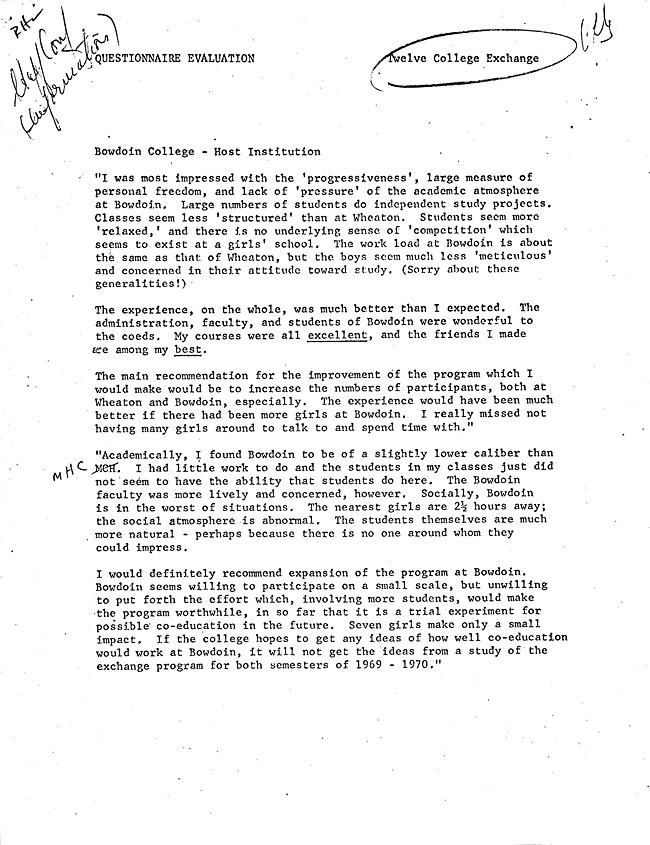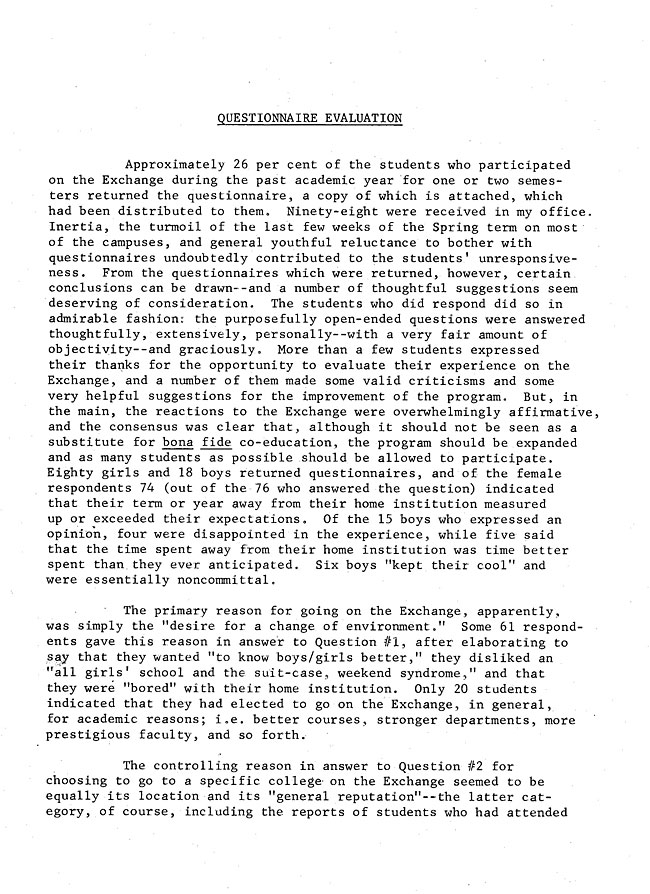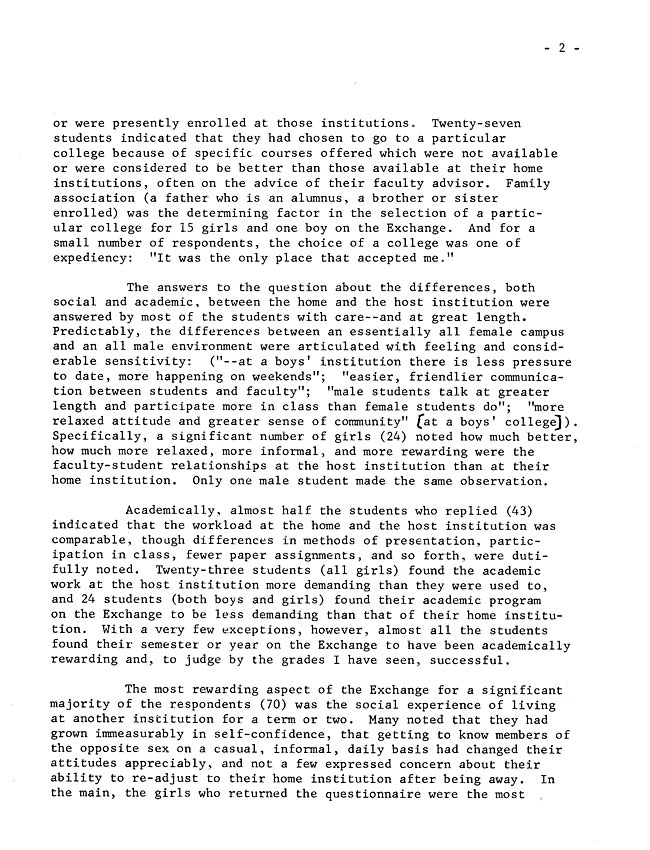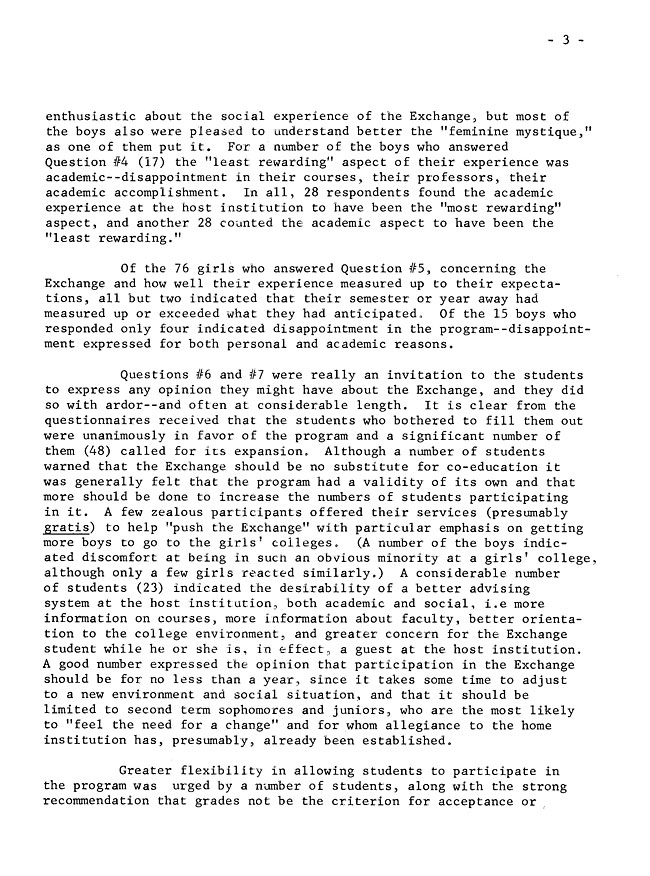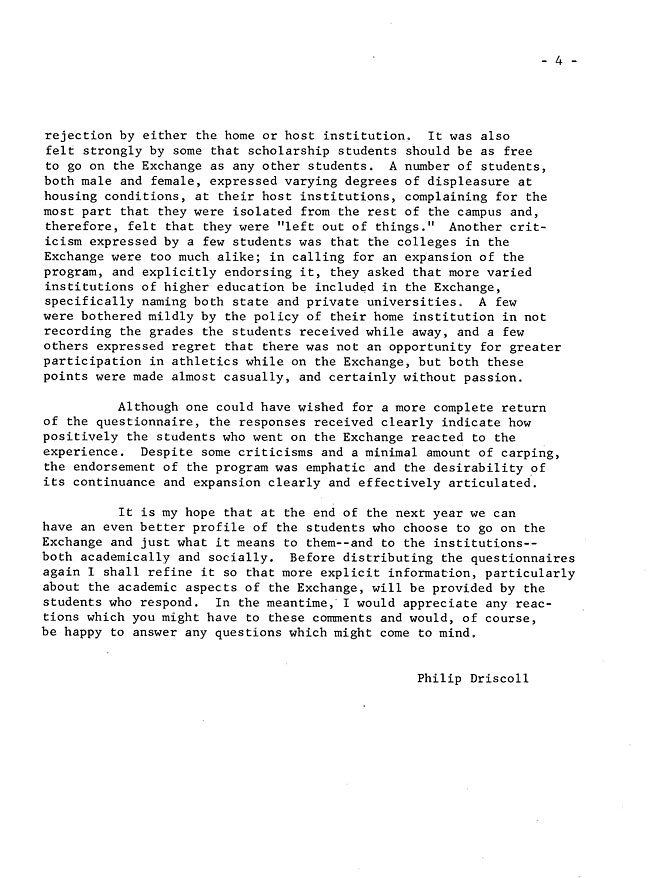The Twelve-College Exchange was a program through which students from Amherst, Bowdoin, Connecticut College, Dartmouth, Mount Holyoke, Smith, Trinity, Vassar, Welleseley, Wesleyan, Wheaton and Williams could apply to spend a semester or year at one of the other institutions listed. It began as the “Ten-College Exchange” but was expanded within months when Trinity, then Wellesley, expressed interest in joining. The Twelve-College Exchange arose as a response to the push towards coeducation; each school was single-sex at the time and wished to experiment with coeducation without completely committing to the process.
The academic year 1969-70 marked the first year of the Exchange and the first year of women students at Bowdoin. This document (Document SB, 15.1) is a student evaluation of the program. According to the Questionnaire Evaluation document (Document SB, 15.2) that summarizes the returned evaluations, approximately 26% of the students who participated the first year returned an evaluation and most of those evaluations were “overwhelmingly affirmative.” Many of the evaluations, like the selected evaluation (Document SB, 15.1), suggested the expansion of the program. This evaluation specifically described Bowdoin’s social atmosphere as “abnormal” because the nearest women were 2½ hours away. Expanding the Twelve College Exchange would increase the number of women at Bowdoin and perhaps improve this “abnormal” social atmosphere.
The student evaluations express the difference in social environment between colleges. On average, female students reported that male institutions had more “relaxed” and “friendlier” communities. Both sexes reported that one of the most significant parts of the Exchange was getting to know the opposite sex. Based on these evaluations, students from these institutions were ready and excited for coeducation. At Bowdoin, there sentiments reinforced the general feeling of staff and students that Bowdoin was ready to make the commitment.
